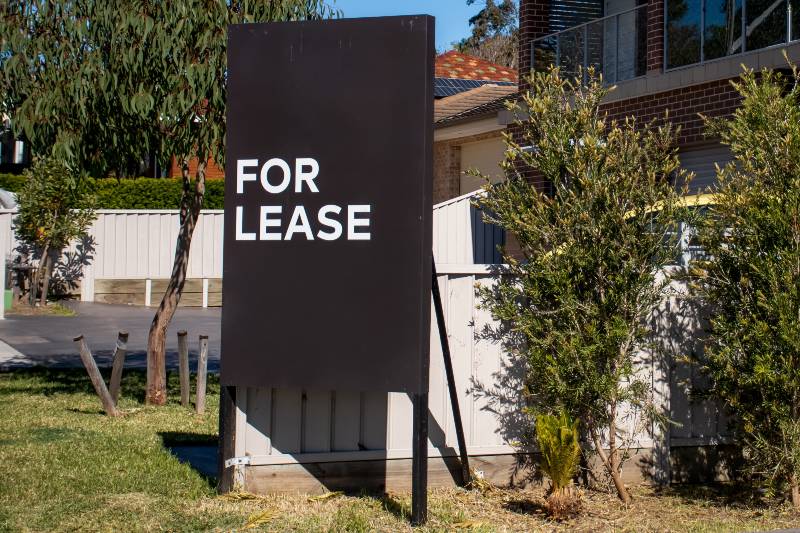Los Angeles is a city of dreams, opportunity, and potential. However, it’s no secret that the City of Angels has been experiencing an unprecedented housing crisis with rent on vacant apartments averaging just under $2,200. This sudden influx of new tenants coupled with a general shortage in rental property availability has left many Angelenos wondering what can be done to prevent economic pressure and retain the vibrancy that first attracted them to this beautiful city.
The answer lies within rent control – an age-old practice that is being explored once more as citizens search for relief from rapidly rising living costs. In this blog post, we’ll explore not only what Rent Control in Los Angeles County entails but also its impact on current affairs both here in Los Angeles County and around the country. Buckle up because it’s time to dive deep into tenacity!
If you rent in Los Angeles, your unit may be covered by the Rent Stabilization Ordinance (RSO), which regulates rent increases and eviction processes for properties built before October 1, 1978, and certain replacement units.
Key Takeaways
- As people struggle with soaring living expenses, they are once again considering Rent Control in Los Angeles County a long-standing practice.
- In America, people typically spend 37% of their take-home pay on housing expenses. Having affordable housing can greatly enhance one’s overall quality of life.
- Los Angeles County has been experiencing an unprecedented housing crisis with rent on vacant apartments averaging just under $2,200.
Understanding Rent Control in Los Angeles
What does rent control mean? What is rent control?
Rent control is a broad term for legislation that limits rental rates in a city or state. While apartments for rent in Los Angeles County are among the most expensive in the nation, finding a rent controlled apartment can provide significant savings for tenants.
Rent control laws vary by municipality, but they generally put a limit on allowable rent increases and protect tenants from eviction without cause.
California has had rent control in various forms in cities in the Los Angeles County and San Francisco areas since the 1970s. In 1995, the state passed the Costa-Hawkins Rental Housing Act, which exempted new construction, single-family homes, and condos from rent control. It also made vacancy control (limiting rent between vacancies) illegal throughout the state.
In late 2019, California became the second state (after Oregon) to pass a statewide rent control law. It covers all multi-family rental units built more than 15 years ago. The state law applies on top of any stricter local ordinances.
What is rent control in Los Angeles?
Los Angeles rentals are among the highest in the country, and with home ownership out of reach for the majority of inhabitants, millions of Angelenos are stuck paying for high-priced apartments.
However, municipal and state rent control legislation can help to make some of those units more affordable, especially over time.
Several communities in Los Angeles County have rent control ordinances in place, and new state legislation limits annual rent increases for apartment tenants across California. These safeguards also protect renters from eviction and give financial payments if they are forced to leave their residence.
The rules can be complicated, but they affect a large number of people. According to the Los Angeles Housing and Community Investment Department, tenants live in almost 600,000 apartments scattered across 118,000 homes.
Because local laws are complex, and many renters may be unaware of the benefits of rental regulations to which they are entitled, the following are the most important items LA residents should be aware of about rent control legislation in the area.
The restrictions vary by city, but all ordinances limit annual rent increases for qualified units. In Los Angeles, this means that renters in apartments covered by the rule should only face yearly rent increases of 3 to 8 percent.

The Nuts and Bolts of LA’s Rent Control Laws
Let’s dive into the heart of LA’s rent control: the Rent Stabilization Ordinance (RSO). This isn’t just some dusty old law – it’s the playbook for fair housing in our city.
What’s the RSO All About?
Enacted back in 1978, the RSO is like the referee in the landlord-tenant game. It keeps things fair by:
- Putting a lid on rent increases
- Giving tenants a shield against unfair evictions
- Making sure LA stays affordable (well, as affordable as possible)
The RSO covers most apartment buildings built before October 1, 1978. Sorry, fancy new condos and single-family homes – you’re usually not invited to this party.
The Rules of the Game in 2024
Here’s what you need to know:
- Rent Hike Caps: Landlords, listen up! You can only raise the rent once a year, and there’s a ceiling:
- 6% max if you’re footing the utility bills
- 4% max if your tenants are paying utilities
- Eviction Playbook: No kicking tenants out just because you feel like it. You need a good reason, like not paying rent or turning the apartment into a zoo (okay, maybe not exactly that, but you get the idea).
- Moving Assistance: If you’re evicting tenants for a “no-fault” reason (like major renovations), be ready to help with moving costs.
- Keep It Livable: Landlords, your property should be more “cozy home” and less “haunted house.” Keep things in good shape, or you might face penalties.
- Paperwork Matters: Don’t forget to register your rental units with the Los Angeles Housing Department. It’s not just red tape – it’s required!
Working Together
Here’s a cool thing: LA City and County are teaming up to make sure rent control works smoothly across the whole region. It’s like a superhero team-up, but for housing.
Why This Matters
These rules aren’t just bureaucratic mumbo-jumbo. They’re designed to keep LA’s housing market fair and (somewhat) affordable. It’s about creating a city where both landlords and tenants can thrive.
Types of rent-controlled properties in Los Angeles
Rent control laws in cities can vary in terms of which types of homes they cover. For instance, in Los Angeles County, rent control does not apply to single-family homes, but it does apply to apartment buildings, condos, townhouses, duplexes, and mobile homes.
Rent Stabilization Ordinance (RSO)
If you are renting a unit in the City of Los Angeles that was built on or before October 1, 1978, it may be subject to the Rent Stabilization Ordinance, which regulates rent hikes and evictions. Units built after July 15, 2007, that were built as replacements for demolished RSO rental units may also be subject to the RSO.
To determine if your rental property falls under the Rent Stabilization Ordinance (RSO), follow these steps: Click on the provided link and enter your address. Then, navigate to the Housing Tab, where you’ll find the RSO status for your rental property.
The ordinance applies to 118,000 properties across the City of Los Angeles, including apartments, condos, co-ops, rooming houses, hotels, motels, and mobile homes in mobile home parks. In total, there are around 624,000 rental units that fall under this ordinance.
The RSO typically applies to rental properties constructed on or before October 1, 1978. It also includes replacement units according to RSO Section 151.28, provided they meet certain criteria:
- Apartment
- Condominium
- Townhome
- Duplex
- Two or more single-family rental units on the same parcel
- Rooms that have been occupied by the same tenant for 30 or more consecutive days in a hotel, motel, rooming house, or boarding house.
- Residential unit(s) attached to a commercial building
- Accessory Dwelling Unit (ADU)
- Junior Accessory Dwelling Unit (ADU)
| Type of Property | Rent Control Applicable? |
|---|---|
| Single-family homes | No |
| Apartment buildings | Yes, if built on or before October 1, 1978, or if built as replacements for demolished RSO rental units after July 15, 2007 |
| Condominiums | Yes, if built on or before October 1, 1978, or if built as replacements for demolished RSO rental units after July 15, 2007 |
| Townhouses | Yes, if built on or before October 1, 1978, or if built as replacements for demolished RSO rental units after July 15, 2007 |
| Duplexes | Yes, if built on or before October 1, 1978, or if built as replacements for demolished RSO rental units after July 15, 2007 |
| Two or more single-family rental units on the same parcel | Yes, if built on or before October 1, 1978, or if built as replacements for demolished RSO rental units after July 15, 2007 |
| Rooms in hotels, motels, rooming houses, or boarding houses | Yes, if occupied by the same tenant for 30 or more consecutive days |
| Residential unit(s) attached to a commercial building | Yes, if built on or before October 1, 1978, or if built as replacements for demolished RSO rental units after July 15, 2007 |
| Accessory Dwelling Units (ADUs) | Yes, if built on or before October 1, 1978, or if built as replacements for demolished RSO rental units after July 15, 2007 |
| Junior Accessory Dwelling Units (JADUs) | Yes, if built on or before October 1, 1978, or if built as replacements for demolished RSO rental units after July 15, 2007 |
| Mobile homes in mobile home parks | Yes |
So in easy words, what is a rent-controlled apartment?
According to Investopedia, a rent-controlled apartment is a government program that limits the amount a landlord can raise the rent. These programs are carried out by local municipalities and vary, but most tenants in a rent-controlled apartment either inherited the unit from a family member or have lived there since the early to mid-1970s.
How does rent control work?
Tenant rent is limited in an apartment rent-controlled by the landlord. The program is governed by state or local governments, and any increases in rent must comply with their policies. Additionally, several forms of rent control are contained in these laws:
Control over vacancy: There are restrictions on how much a landlord can raise rent when a tenant vacates a unit. Additionally, there is a cap on the annual increase in rent.
Decontrol over vacancy: In the event that a renter vacates an apartment, the landlord is free to increase the rent to the going rate. There are situations where the new rent cannot be greater than a specific percentage of the old rate.
To safeguard tenants, some governments and cities pass extra rent control legislation.
Benefits of Rent Control
Tenant protections
Rent control laws not only limit how much landlords can increase the rent but also prevent them from evicting tenants without a valid reason. If you have a lease for a rent-controlled apartment, your landlord must renew it every year as per the obligation.
Affordable housing
Rent-controlled apartments have lower prices which help make housing affordable for low- and moderate-income people. This is particularly important in expensive cities where workers’ wages may not increase at the same rate as rising rents.
Stabilizing neighborhoods
Rent control is a policy that puts a cap on how much landlords can increase rents for their tenants, which makes housing more affordable for people in the area. One of the main advantages of rent control is that it can help stabilize communities. When rent control prevents landlords from raising rents too much, it keeps people in their homes and helps boost community involvement and economic development.
Drawbacks of Rent Control
Impact on housing supply
Rent control can have a negative effect on the housing supply by discouraging property owners from investing in their rental properties. This can result in a decline in housing quality and a shortage of available rental units in areas with rent control. This can lead to landlords neglecting the maintenance and upgrades of their properties since they cannot charge market rates. Consequently, the living conditions of tenants may deteriorate, and this may contribute to urban decay.
Reduced incentives for property maintenance
Although rent control policies intend to safeguard tenants from steep rent hikes, they can unintentionally result in landlords being less inclined to maintain their properties. Regulations that restrict landlords from charging market prices for their rental units can lower their drive to invest in the maintenance and enhancement of their properties. Rent control can lead to a decrease in the quality of rental housing and have a harmful effect on the living conditions of tenants in those rental units.
Despite these challenges, there are strategies that property owners can employ to improve their returns. For insights on how to optimize your investment in a rent-controlled environment, see our guide on Maximizing ROI on Apartment Buildings.
Unintended consequences
Although rent control policies are meant to provide affordable and stable housing for tenants, they can sometimes have unintended consequences that work against this goal.
An unintended consequence that can occur is the development of a rental market with two tiers. Rent-controlled units become rare and in high demand, while non-rent-controlled units become more popular and expensive. This imbalance in the market can make housing less affordable for individuals who cannot obtain a rent-controlled unit.
How Rent Control Affects Landlords
Rent increase limitations
Rent control is a form of government regulation that places restrictions on landlords. These limitations may include restrictions on the ability to end a lease, restrictions on the amount of rent that can be charged, limitations on the annual rent increase, or a combination of all of these.
For apartment building owners navigating the complex landscape of rent control and other regulations, our comprehensive guide on Legal Considerations When Owning an Apartment Building offers invaluable insights to help you stay compliant and protect your investment.
Just Cause Eviction Protections
Rent Control policies restrict the amount by which a landlord can increase the rent for an existing tenant every year. Just Cause for Eviction policies stop landlords from kicking out tenants without a particular reason, such as failure to pay rent. It’s crucial to combine Rent Control with Just Cause to stop landlords from evicting tenants to increase rents or from increasing rents so much that tenants are compelled to vacate.
Read on here to learn about the Top 5 Things Impacting the Los Angeles Commercial Real Estate Market. From the seemingly unstoppable rise of tech to the city’s plans for infrastructure improvements, there are plenty of factors that can influence the commercial real estate market in Los Angeles.
Regulations and requirements
Rent increases
To understand the rules for rent-controlled units in Los Angeles County, here are the important details to keep in mind.
- In Los Angeles County, the maximum rent increase is 8%, which is lower than the maximum rent increase of 5% plus inflation allowed in other parts of the state with rent control laws.
- The rent can only be increased by landlords once every 12 months.
- If the landlord increases the rent, they can also raise the security deposit by the same amount.
- If a new tenant, who was not listed in the original lease, moves in, the landlord can increase the rent by 10%. The rent must be reduced by the same amount if that tenant moves out.
The landlord has the option to increase the rent by 1% annual rent increases for utilities they are responsible for paying.
- Rent increases require a minimum of 30 days’ notice.

How Rent Control Affects Tenants
Rights and responsibilities
Rent control is a policy implemented in some jurisdictions to limit the amount landlords can charge for renting residential properties. The primary objective of rent control is to maintain affordable housing options for tenants, especially in areas with high demand and limited supply. While rent control can offer benefits for tenants, it also comes with various implications concerning tenants’ rights and responsibilities.
For a comprehensive understanding of your rights and obligations as a tenant in Los Angeles, beyond just rent control, check out our detailed guide on Tenant and Landlord Needs Balance: Find Out Why.
How to find rent-controlled apartments
Which areas in Los Angeles are subject to Rent Control?
You can find out if your property is rent-controlled by using the Zone Information and Map Access System (ZIMAS), a resource available for City of Los Angeles County residents. To access ZIMAS, visit zimas.lacity.org.
Dispute resolution
Dispute resolution involves using different methods and processes to settle conflicts or disagreements between parties. This approach provides options other than going to court, which can be expensive, lengthy, and hostile.
Using dispute resolution methods can encourage working together to solve problems and can also help parties to maintain or enhance their relationships. Common dispute resolution methods include:
Negotiation: Negotiation is a process where the parties in a dispute communicate directly with each other to reach a mutually acceptable resolution. It is informal and voluntary, involving compromise and collaboration. The objective is for each party to understand the other’s perspective and interests. Legal counsel may or may not be involved in the negotiation process.
Mediation: Mediation is a process that’s more organized than negotiation. It involves a mediator, who is an impartial third party that helps in communication between two conflicting groups. The mediator’s role is to facilitate communication between parties to identify their interests, consider various solutions, and ultimately come to a lease agreement that satisfies everyone involved. Mediators do not have decision-making authority and instead aim to guide the parties toward mutually acceptable solutions.
Rent Control Reforms
Recent changes to Los Angeles rent control laws
Landlords can only evict tenants from rental properties, including single-family homes, if there are specific reasons such as unpaid rent, documented lease violations, or owner move-ins. They can no longer evict tenants for no reason.
The Housing Department of the city has a list of valid legal reasons for eviction categorized as “at-fault” and “no-fault”. If the eviction falls under the “no-fault” category, the landlord must compensate the tenant to pay relocation fees.
The city’s Housing Department reports that about 400,000 more rental units will be covered by “just cause” eviction protections if they are made universal. Some renters, such as those in rent-stabilized units, already have these protections.
This part of the package is highly important because it provides protection to all units within the city. The law is currently active and its regulations will come into play either after six months of residing in a property or upon the termination of a lease, whichever happens first.
Advocacy for reform
In February of last year, the Los Angeles City council passed a set of permanent tenant protections in Los Angeles with the goal of helping renters as the local state of emergency related to COVID-19 was scheduled to end at the end of this month.
In the coming weeks, the Los Angeles City Council will vote on a comprehensive set of tenant protections. However, advocates for tenants’ rights argue that an important ordinance is not included: the right to legal counsel for renters. On Wednesday night, SAJE organizers partnered with the Right to Counsel Coalition of Los Angeles to hold a town hall in the historic South-Central neighborhood of LA.
At the meeting, renters who are at risk of eviction attended to gain knowledge about their rights and legal options for seeking advice. Over 100 renters joined via Zoom, and dozens were present in person.
Jose “Joey” Lopes, who attended the meeting, revealed that he is currently two months behind on his rent. Lopes explained that he had depleted most of his savings to pay rent during the first year of the pandemic. He added that his mother had contracted COVID-19 recently, and her condition became severe enough to require heart surgery. The medical bills added up quickly, and his job as a DoorDash delivery driver was not adequate to cover all his expenses.
Lopes found it challenging to complete the rent relief application form. He compared it to filling out an IRS form, stating that any form that complex is difficult to complete.
Lopes said that having a lawyer provided for him would help him better understand his rights as a renter and navigate the application process. Additionally, if he were to face eviction and choose to contest it in court, he would feel more at ease with the knowledge that a lawyer could assist him in his defense.
Future outlook
Despite some good news about U.S. rent prices falling in August, the long-term outlook still doesn’t seem promising. Realtor.com’s latest data shows that the median rent in the 50 biggest cities in the country decreased by $10 per month last month. This is the first price drop since November.
Although prices have been declining for a month, it does not necessarily mean that this will continue long-term.
According to Realtor.com’s chief economist, Danielle Hale, rental prices are expected to remain high until 2023. While rent growth may slow down, it is unlikely to return to pre-pandemic levels.
According to a Federal Reserve Bank of Dallas forecast that relies on data from the federal government’s consumer price index, the rental price growth rate will increase from 5.8% in June 2022 to 8.4% in May 2023 on a year-over-year basis.
Thomas LaSalvia, a director of economic research at Moody’s Analytics, stated in a recent CNBC interview that their upcoming forecast predicts a rent growth rate of 5% to 7%. This is higher than the 4% to 5% annual rent increase price gains observed before the COVID-19 pandemic.
LaSalvia believes that the Fed will need to increase interest rates within the next six months in order to bring inflation down to a comfortable level. As a result of this expectation, mortgage rates are expected to remain elevated.
Moody predicts that rental prices will stop increasing as much in the second half of 2023. This prediction assumes that the cost of buying a home decreases.
According to LaSalvia, it is expected that the Fed will stop raising interest rates once inflation decreases. This would ease pressure on the mortgage market and lead to lower prices for renters.
Realtor.com’s representative Hale suggests that renters should anticipate higher rent prices for now. Renters might save money by renewing their current lease if it is reasonable. Additionally, they could explore the suburbs, where rental rates have not increased as quickly as those in urban areas.
According to Hale, renters can consider sharing a larger unit with someone else to save money. This is because the price growth of studio apartments has been higher compared to one- or two-bedroom rent-controlled apartments in Los Angeles.
Los Angeles Rent Control Map
Visit the LA City Website to get an overview of the control map.
Rent Control in Los Angeles FAQs
What is the rent control limit in Los Angeles?
What is the rent control in Los Angeles 2024?
What areas of LA County have rent control?
Can my landlord raise my rent 20% in California?
What are the drawbacks of rent control?
Furthermore, implementing rent control may lead to a decrease in the construction of new rental properties, which can worsen the housing deficit and boost prices in the unregulated rental market. Moreover, the insufficient availability of rent-controlled units may intensify the competition among renters, making it harder for those with lower incomes or limited renting track records to find affordable housing.
Rent control can have drawbacks. For example, it may make tenants stay in properties that do not suit them anymore, which hinders mobility and efficient use of housing resources. These disadvantages can outweigh the expected benefits of rent control, leading to reduced affordability and quality of housing in the long term.
Conclusion
City of Los Angeles rent control is a complex issue that affects tenants and landlords alike. There are multiple perspectives and complexities which must be taken into consideration. Furthermore, many renters experience financial hardship due to increasing rental rates, while landlords can be subject to abuse or exploitation. It is essential for everyone involved to understand their rights and options before making any decisions.
Working with a knowledgeable attorney may be the best route for tenants and landlords to ensure they traverse the current laws correctly. The process can provide guidance, clarity, and protection for both parties during this difficult period.
Ultimately, tenants need to know that there are resources available and utilize them if necessary. Don’t let anyone take advantage of your situation! Call or schedule a consultation today to learn about your rights about rent control Los Angeles –so you can protect yourself from potential unfair practices.




